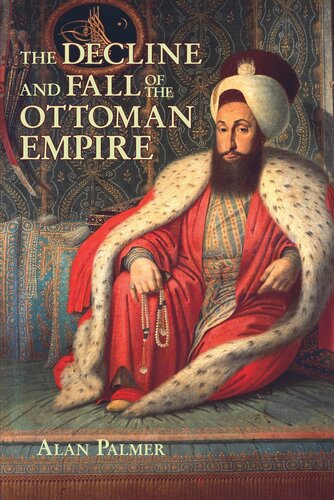

Most ebook files are in PDF format, so you can easily read them using various software such as Foxit Reader or directly on the Google Chrome browser.
Some ebook files are released by publishers in other formats such as .awz, .mobi, .epub, .fb2, etc. You may need to install specific software to read these formats on mobile/PC, such as Calibre.
Please read the tutorial at this link: https://ebookbell.com/faq
We offer FREE conversion to the popular formats you request; however, this may take some time. Therefore, right after payment, please email us, and we will try to provide the service as quickly as possible.
For some exceptional file formats or broken links (if any), please refrain from opening any disputes. Instead, email us first, and we will try to assist within a maximum of 6 hours.
EbookBell Team

5.0
78 reviewsLike England’s Charles II, the Ottoman Empire took “an
unconscionable time dying.” Since the seventeenth century, observers had
been predicting the collapse of this so-called Sick Man of Europe, yet
it survived all its rivals. As late as 1910, the Ottoman Empire
straddled three continents. Unlike the Romanovs, Habsburgs, or
Hohenzollerns, the House of Osman, which had allied itself with the
Kaiser, was still recognized as an imperial dynasty during the peace
conference following World War I.
The Decline and Fall of the Ottoman Empire
offers a provocative view of the empire’s decline, from the failure to
take Vienna in 1683 to the abolition of the Sultanate by Mustafa Kemal
(Atatürk) in 1922 during a revolutionary upsurge in Turkish national
pride. The narrative contains instances of violent revolt and bloody
reprisals, such as the massacres of Armenians in 1896, and other “ethnic
episodes” in Crete and Macedonia. More generally, it emphasizes
recurring problems: competition between religious and secular authority;
the acceptance or rejection of Western ideas; and the strength or
weakness of successive Sultans. The book also highlights the special
challenges of the early twentieth century, when railways and oilfields
gave new importance to Ottoman lands in the Middle East.
Events
of the past few years have placed the problems that faced the last
Sultans back on the world agenda. The old empire’s outposts in the
Balkans and in Iraq are still considered trouble spots. Alan Palmer
offers considerable insight into the historical roots of many
contemporary problems: the Kurdish struggle for survival, the sad
continuity of conflict in Lebanon, and the centuries-old Muslim presence
in Sarajevo. He also recounts the Ottoman Empire’s lingering interests
in their oil-rich Libyan provinces. By exploring that legacy over the
past three centuries, The Decline and Fall of the Ottoman Empire examines a past whose effect on the present may go a long way toward explaining the future.
Praise for The Decline and Fall of the Ottoman Empire:
“Alan
Palmer writes the sort of history that dons did before ‘accessible’
became an academic insult. It is cool, rational, scholarly,
literate.”—John Keegan
“A scholarly, readable and balanced history.”—The Independent on Sunday
“A marvellously readable book based on massive research.”—Robert Blake